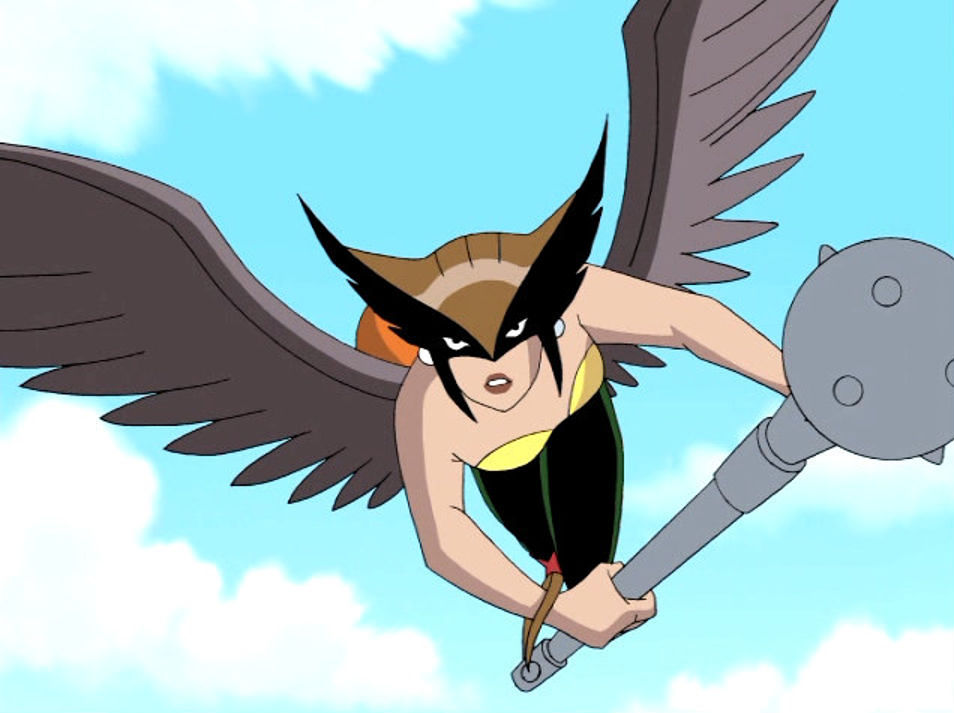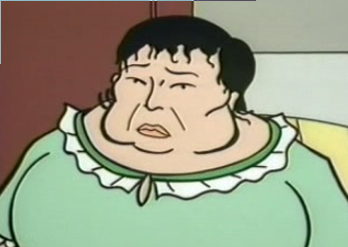This guest post written by Maggie Slutzker appears as part of our theme week on Superheroines.
As a teenager, I was strictly a DC girl. My comic collection was World’s Finest, the Justice League, and everything Batman. I loved Justice League, Batman the Animated Series, Batman Beyond, and just about all of the accompanying movies. In my twenties, I still look back to those books and even watch those movies on occasion. I can’t tell you how many conversations I’ve had, as an adult, about Batman: Mask of the Phantasm. (If you don’t know who Andrea Beaumont is, you need to check it out.)
But something’s happened to DC. They just can’t seem to get it together. They have embraced that gritty “realist” style that’s so fitting of Batman, and yet they seem to have forgotten the core values of their most prominent heroes. When I was fourteen, nothing would have made me happier than a Batman/Superman movie. And for Wonder Woman to be involved? I would have cried sweet tears of joy. My friends and I would have flocked to the theatre, and then celebrated afterward by watching all the animated movies.
Now, things are different. When DC announced Batman v. Superman, I only felt worry in the pit of my stomach — worry that, I might add, turned out to be completely justified. (Killing off Mercy Graves before we’ve even been introduced to her? Why don’t you kill all my hopes and dreams before I live them, too?) And with a Wonder Woman movie on the horizon, well, I have my hopes…but I know better than to expect greatness from DC’s live action movies anymore.
Does it sound like I take comics too seriously? Maybe so. Definitely so. But if you’re a fan yourself, you can understand how important heroes are, and the part they play in our lives. So while I’m apprehensively excited for (FINALLY) a Wonder Woman movie, this isn’t going to be about her. This is about my favorite chess-playing, mace-wielding, war-crying, winged superheroine role model: Shayera Hol.
Hawkgirl.
Say it too fast and it sounds like you’re saying “hot girl.” This was very frustrating to me as a kid when I tried to tell people who my favorite superhero was. Sometimes I would just give up and say “Batman,” because technically I knew more about him anyway. But my entire obsession with superheroes and comics stemmed from watching the Justice League cartoon, and loving Hawkgirl. Let me clarify here and now that the Hawkgirl I’m talking about is the hero from the TV series, and not the comics. When I became a fan, it was about 2005. At that time, I really wasn’t interested in learning about Hawkman. I couldn’t find a lot of comics that were solely about Hawkgirl, and when she was involved she wasn’t quite the Hawkgirl I knew from the cartoons. I had the damnedest time finding Hawkgirl action figures, which I was only able to track down at theme parks and the Toys R Us at Times Square. And why was she Hawkgirl instead of Hawkwoman? I can’t speak to that. Still, I loved her so much.
Martian Manhunter couldn’t read her mind. Batman couldn’t beat her at chess. Dr. Fate’s magic couldn’t touch her. Even Aquaman, that irritable Atlantean snob, had a healthy respect for her. She wielded her Nth metal mace with a war cry. She saw faith as a crutch, a sort of oppression, and she expressed confusion about it to Wonder Woman and Aquaman. She stood up to the evil god Exthultu when he came for Earth and Solomon Grundy’s soul. Her bond with Solomon Grundy would later draw her back to the show, after being cast out.
Wonder Woman was the explicitly feminist character on Justice League, and in a way one could argue that Hawkgirl was made out to be the stereotypical “cool girl” of the group. Some might say she was the yellow Power Ranger to Wonder Woman’s pink, but their personalities and their relationship developed beyond that. Both women were foreigners, but Wonder Woman was more warrior princess, where Hawkgirl saw herself as a soldier. While they were different, they were both always totally willing to go into battle for their friends, including each other. Hawkgirl had a stronger bond with the Flash, and of course, Green Lantern. She could also identify with Superman and Martian Manhunter, the other lost “aliens” of the group. And she had some of the best lines. When Wonder Woman said, “[Men] can’t possibly be that essential to your life,” Shayera said, “Don’t knock it til you’ve tried it.” When, for the millionth time, Flash said he was the fastest man alive, she said, “Which might explain why you can’t get a date.” And, for Toonami fans who remember, “You think I need this mace to take you down?”
Hawkgirl also fell for John Stewart, the Green Lantern. Thanks to the Joker, their love was fulfilled, unlike that of Wonder Woman and Batman. Theirs was an interracial relationship, and while the show never mentions race or explicitly makes it a source of conflict, it was meaningful that it was shown and that fans became invested in it. The two came, literally, from different planets, but both were fighters with military experience, strategic minds, and truth to their own selves. For cartoon characters, they shared amazing chemistry.
Hawkgirl’s storyline on the show became more important as Justice League came to its end, and Justice League Unlimited began. (Amazing opportunity, or huge mistake? I’ll let you decide.) Within the confines of the TV series, Shayera Hol turned out to be a spy sent from her home planet, Thanagar. In “Starcrossed,” everything the Justice League has come to know and trust crashes down on them. Just in case there’s someone reading this who plans to watch the series, I won’t go too deep into detail. I will only say that Shayera has to choose between destroying her new home, Earth, and leaving her old home completely vulnerable to death in battle. To get critical, the writers made it a little too much about Hawkgirl choosing between two men, but as we know from popular YA fiction, movie producers can’t get enough of love triangles.
As someone who would later try her hand in fields related to justice, I was taught some important lessons by the “Starcrossed” episodes. The first is that, no matter what mask you wear, Batman will always know who you truly are. The second is that when you’re torn between two people, places, or situations that you care about equally, you must be able to objectively look at what is right, and what is wrong. When Hawkgirl realizes that Earth will be destroyed, she changes course completely. She makes this final decision without religious faith, without unfair bias, and, first and foremost, with the protection of Earth’s citizens in mind. We have human politicians who can’t even do that.
For all of her flaws and perceived treachery, Hawkgirl’s faith in her team inspired me. In the episode “In Blackest Night,” John Stewart is accused of an unthinkable crime. This is before any romance, and Hawkgirl isn’t the first of the group who is certain that John didn’t do it — that would be Superman, ever the boy scout. But when Hawkgirl leaves the courtroom to find that John’s friends deserted him, she’s enraged at their near-instant abandonment. She fights them, and not long after, the Green Lantern Kilowog goes to John’s defense. Something glossed over in the series is that Hawkgirl is a detective; that was her job on Thanagar. Hawkgirl follows and investigates a witness that she can immediately tell is a liar, and this is ultimately what saves John from a completely unbelievable mistake. (I have many more thoughts about this episode, mainly that the justice system in space is just as unorganized as the ones here on Earth.) She goes on to earn the respect of the entire Green Lantern Corps.
Because of her skill, her loyalty, and her ethics, nearly everyone Hawkgirl ever came into conflict with in a work-related capacity would eventually come to respect her. Aquaman, for instance. Dr. Fate. Amazo. Wonder Woman, twice. The Green Lanterns. The connections and reconnections she made after “Starcrossed” speaks volumes. And when her Hawkgirl disguise is no longer an option, Shayera becomes a superhero without an alternate identity: she is simply herself.
Watching Justice League enhanced my female friendships. I specifically mention female friendships because there’s an overarching idea that when young girls get into comics — and video games for that matter — they do it to impress boys. Nothing could be further from the truth. (The only boy who influenced my love of superheroes was my little brother, who as a three-year-old spent at least a year dressed as Batman. We still call my dad Robin.) I forced my friends to watch Justice League with me, because that’s just what I did with shows and books that I love. Guess what? They loved it, too. My best friend and I decided we were Wonder Woman and Hawkgirl.
My best friend and I had long debates about different episodes. We spent hours upon hours creating our ideal live-action cast. When Hawkgirl addressed that Wonder Woman had to be magic to fight in that outfit, we appreciated it. We definitely shipped Batman and Superman. And, since Netflix wasn’t an option, my whole family got involved when I watched Justice League and Justice League Unlimited every week. When I excitedly anticipated Shayera’s return to the show, they understood. My mother was particularly furious when Shayera and Green Lantern’s romance didn’t get neatly wrapped up. Super powers or not, a good story is a good story.
It’s simple, really. Hawkgirl and superheroes lead us to love and inspiration. Even as fictional characters, they give us hope. It means a lot to be guided in that direction by someone who in some way shares your identity. Hawkgirl taught me to be observant. She taught me that it’s possible to come through trying times. She taught me that being able to think was just as important as being able to fight, and that good and evil aren’t always absolutes.
And when all else fails, grab your electric mace.
Maggie Slutzker is a writer and feminist living in New York. Check out her Facebook page, “A Little Something for the Ladies,” or follow her on Twitter @suchaslutzker.











